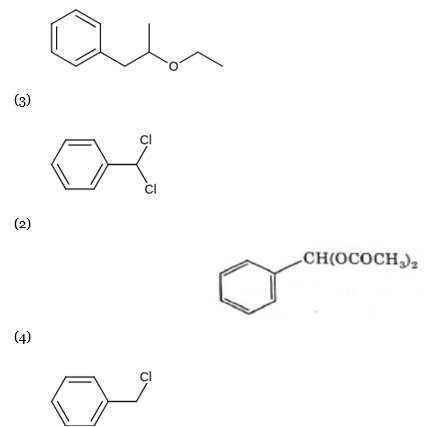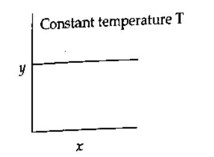Chemistry Chemical Kinetics
Get insights from 111 questions on Chemistry Chemical Kinetics, answered by students, alumni, and experts. You may also ask and answer any question you like about Chemistry Chemical Kinetics
Follow Ask QuestionQuestions
Discussions
Active Users
Followers
New answer posted
3 months agoContributor-Level 10
A reaction can have zero activation energy, for example, •CH? + •CH? → CH? − CH? has zero activation energy.
New answer posted
3 months agoContributor-Level 10
Let the new rate be, R'.
A' = [3 A], B' = [B]
R' = K [A']² [ B']
= K [3 A]² [ B]
= 9 K [ A]² [ B]
= 9 * R
Hence, rate would become nine times.
New question posted
3 months agoNew answer posted
3 months agoContributor-Level 10
(4) C? H? O will have different alkyl group attached with polyvalent functional group that's why show metamerism
Only one arrangement possible so can not show metamerism.
(2) C? H? O → CH? – O – CH? – CH? Only one arrangement possible so can not show metamerism.
(1) No polyvalent functional group in C? H? , so can not show metamerism.
New answer posted
3 months agoContributor-Level 10
k = (2.303 / 5) log (0.1 / 0.001) = (2.303 * 2) / 5 = 4.606 / 5 = 0.921 min? ¹
New answer posted
3 months agoContributor-Level 10
For a zero-order reaction Rate Vs conc graph will be straight line parallel to the x-axis.
For a 1st order reaction t? /? vs concentration will again be a straight line parallel to x-axis.
New answer posted
3 months agoContributor-Level 9
T? = 300 K; K? = 1 * 10? ³ s? ¹
T? = 200 K; K? =?
E_a = 11.488 kJ/mol
Using Arrhenius equation:
log (K? /K? ) = (E_a / 2.303R) * [ (T? - T? ) / (T? )]
log (K? / 10? ³) = (11.488 * 10³ / (2.303 * 8.314) * [ (-100) / (6 * 10? )]
log (K? / 10? ³) = -1
K? / 10? ³ = 10? ¹
K? = 10? s? ¹ or K? = 10 * 10? s? ¹
New answer posted
3 months agoContributor-Level 10
Using the integrated rate laws for both reactions and solving for time 't' yields a value of 108.
New answer posted
3 months agoContributor-Level 9
Half life, t? /? = 1min
Let, time of 99.9% completion of reaction be 't' min
Let the reaction is of first order
K = (2.303/t) log? ( [R]? / [R])
[R] = 0.001 [R]?
t = (2.303 * 3 min) / 0.693
t = 9.99 min
the nearest integer is 10.
Taking an Exam? Selecting a College?
Get authentic answers from experts, students and alumni that you won't find anywhere else
Sign Up on ShikshaOn Shiksha, get access to
- 65k Colleges
- 1.2k Exams
- 681k Reviews
- 1800k Answers



